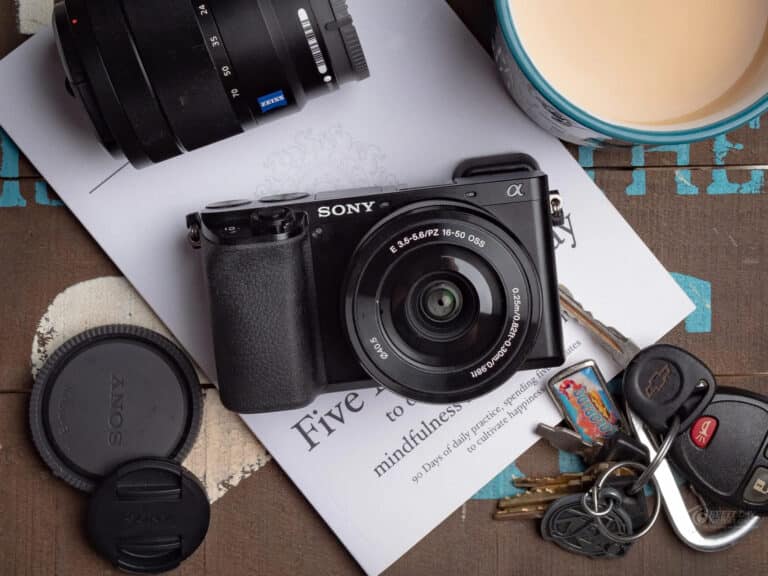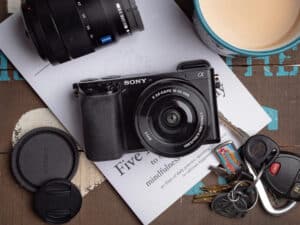The Sony A6100 is a natural sequel to the massively successful Sony A6000, a new player mirrorless camera that is still available for purchase fresh five years later. That’s the mark of a popular and long-lasting camera.
Both cameras are indeed the entry-level mirrorless APS-C sensor cameras in Sony’s lineup. The term APS-C refers to the sensor size of the camera, which is larger than those found in smartphones but smaller than full-frame processors found on pro-friendly models such as the Sony A7 III.
The A6100 retains many of the A6000’s key features, including the familiar body style, a sensor with the same 24MP resolution, and a tilting back LCD (however the A6100’s display is now touch-sensitive), as well as an 11fps burst mode.
The A6100, on the other hand, has several very welcome enhancements. Overall, this camera is far more user-friendly. The overall handling and performance have been improved, thanks to the outstanding continuous autofocus mechanism.
We have a camera that can compete more effectively with today’s entry-level mirrorless cameras from other manufacturers, of which there have been many more since the A6000’s launch. Regardless, the Sony A6100 is a true replacement for one of the all-time best-selling mirrorless cameras.
What you will see here?
Sony A6100: Price and availability
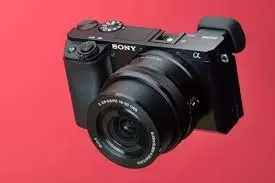
In late 2019, Sony released the A6100 camera. The A6100 is priced at $600 for the body alone or $697 with the 16-50mm kit lens. Expect to see discounts on this camera, as well as previous Sony mirrorless cameras like the original Sony a6000, which is now available for $550 with the 16-50mm power-zoom kit lens.
Specifications
- Battery life: up to 420 shots
- Sensor: 24.2MP APS-C CMOS
- Screen: 3-inch 922K-dot tilting touchscreen
- Lens mount: Sony E-mount
- Burst shooting: 11fps
- Autofocus: 425 selectable points
- Video: 4K/30p
- Connectivity: Wi-Fi and Bluetooth
- Weight: 396g
Sony A6100: Features

Sony continues with a 24.2MP APS-C sensor, which is the same as the Sony A6400 & Sony A6600 cameras, which are more expensive. Its resolution is standard for just an entry-level camera and more than adequate.
While the A6100 can capture 4K at 30 frames per second, it does so with a little crop; shoot 4K at 25fps, however, and the sensor is used to its full width (which implies no pixel binning) and the 16:9 rear LCD is filled. S&Q (Slow & Quick Motion Films) is a setting that takes Full HD slow-motion films up to 100 frames per second (4x) or rapid motion movies down to 1 frame per second (25x).
With the Sony A6100, you get a lot of value for your money. The same 1.44 million-dot Viewfinder, hotshoe, and pop-up flash are all present, expertly crammed into a very small body. In addition, the LCD screen has been upgraded to be touch-sensitive and can be pulled out now and up into the selfie position.
Images can be captured & shared wirelessly using Sony’s ‘Imaging Edge Mobile app on a phone or tablet linked to Wi-Fi. NFC or the traditional QR code approach can be used to make a quick connection.
Build and handling
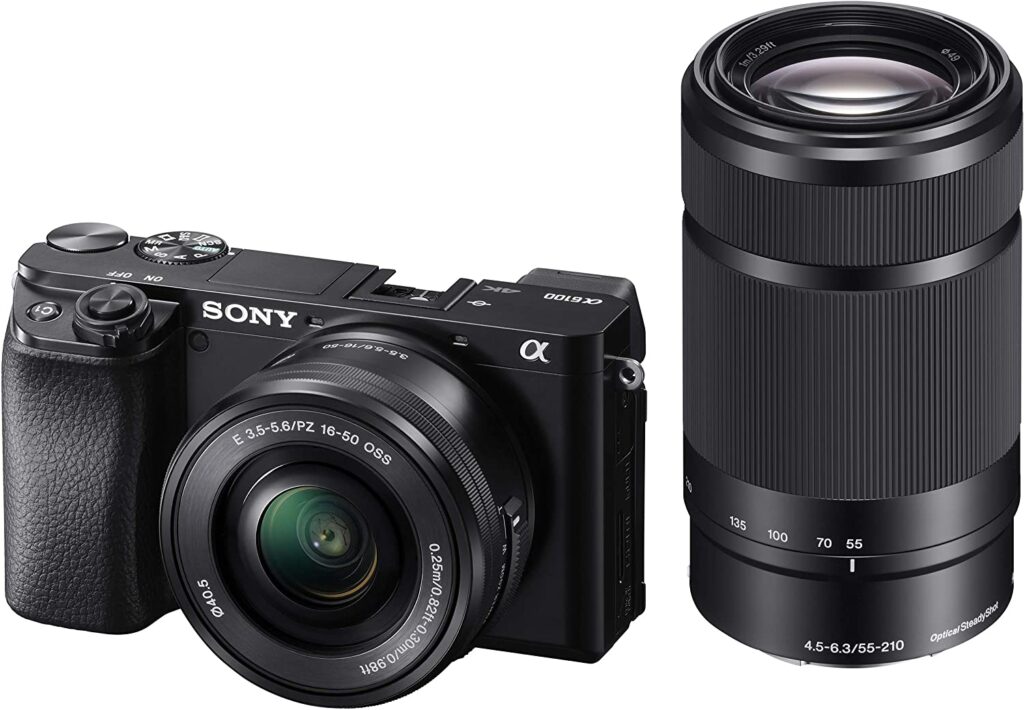
We had a great time with Sony A6100 overall. We coupled the camera with two slightly more expensive lenses, the FE 2470mm f/4 & FE 35mm f/1.8, which are both a good size and weight fit for the camera.
The A6100 is tiny enough to put inside a jacket pocket, depending on the lens. This is because of its compact size: it is only 67mm tall and has a fairly flat profile, unlike rivals such as the Fujifilm X-T3, which have a pentaprism ‘hump’.
The polycarbonate shell has a strong feel to it, and the line allows is sturdy, while the rough hand & thumb grips provide such a secure grasp. Thank goodness for the slightly bigger grip than the A6000’s.
Considering the camera’s small size, it has a surprising variety of controls and functionality. For indirect fill light, you receive a pop-up flash that may be tipped back by hand. Optional accessories, including an external microphone, can be attached to the hotshoe and afterward linked via the microphone connection on the side. (A headphone jack, predictably, is not included.)
A built-in EVF is also included, which is a nice feature for a camera at this price point. It’s not the most user-friendly, and the resolution stays at 1.44 million dots on average. You’ll have to pay a premium again for Sony A6400 or Sony A6600 if you want the latest high-resolution EVF.
Tilt-touch screen with selfie mode

In selfie mode, the tilt LCD could be dragged out and up, then flipped vertically just above the camera. The 3-inch display has a 920,000-dot resolution, which is low by today’s standards. It’s also a 16:9 screen, which means that full-resolution 3:2 photographs don’t fill the screen and show on the small side — a similar issue also occurs with the Fujifilm X-16:9 A7’s display.
Given that the A6100 is a budget camera, it’s a little surprising that the touchscreen capabilities are so limitless. In playback, the screen uses to pick AF points & track subjects, as well as pinch-to-zoom, to scan a picture. You can’t, however, navigate menus or change settings. An AF selection is, however, undoubtedly the most useful touch function.
Small cameras are notorious for having tiny, fussy buttons, but not here. Label all buttons clearly and at a reasonable size. There are two control buttons on the back, both of which perform by your thumb. Another dial just on the top front would’ve been a wonderful addition to allow you to use your index finger instead.
Sony A6100: 420-shot battery life
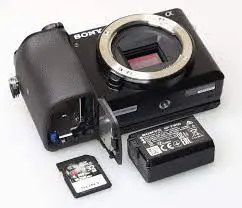
At this price point, 420-shot battery life is fairly competitive. During the frigid winter months, we discovered that the camera’s battery life depleted a little faster than planned. USB charging, on the other hand, is really useful. It’s worth mentioning that the A6100 comes with only the USB cord and no battery charger.
The battery charges every time the camera turns off when it connects to a power bank, which came in handy during our snowy outings. Mirrorless cameras benefit from on-the-go charging because of their shorter battery life.
Single SD UHS-I card slot
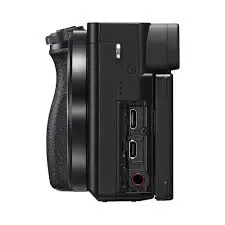
The A6100 saves photos to a single SD card, but that isn’t compatible with newer UHS-II cards, which have faster read and write speeds. The outcome is some operational lags while using the camera during continuous photography, which is unsurprising.
When photographing in Aperture priority mode, one handling issue worth highlighting – which isn’t unique to the A6100 but is easily evident on a camera like this – is just how ‘Auto ISO’ prefers a lower ISO level over a faster shutter speed.
Adjust the lens to a 24mm comparable focal length, auto ISO would choose a shutter speedy or roughly 1/30 sec, regardless of the situation should photography. This is fine with static subjects, that will remain sharp, but it will blur any movement from individuals.
To secure the desired shutter speed and aperture, we frequently photo in full ‘Manual’ mode with auto ISO. When you put the camera in Auto mode, though, scene detection kicks in, along with more reasonable shutter rates.
It takes longer to get to know the A6100’s capabilities than it does with almost all other entry-level cameras. That’s not a terrible thing, but we’d strongly advise doing some research on how to put up a camera for easy handling and to get the most out of it. Changing the continuous AF settings and putting your most frequently used controls in the main Function (Fn) menu are two examples.
Performance

The A6100’s fastest and most reliable feature is its autofocus technology, which works well in both photos and video. It uses the same AF system as that of the flagship Sony A6600, which costs nearly twice as much.
You can choose from a variety of Focus Modes & Focus Areas. We settled on continuous AF with the ‘Tracking: Expand Flexible Spot’ specific module for practically all cases after experimenting with these settings.
Focusing on broad action – family photographs, a specific object inside the frame – is quite dependable with this AF setup in place. We almost forgot this was an entry-level camera at times because the A6100’s excellent focusing was so consistent.
On paper, an 11fps burst mode is excellent. The actuality of ‘consistently high’ shooting in practice, however, is a little underwhelming. Burst lengths may not always match the promises of up to 67 frames in our experience. Furthermore, the camera must buffer such sequences before returning to full performance.
Despite the Bionz X CPU, a UHS-I SD card port has obvious limits. The 6fps ‘Continuous Mid’ photography option better fit for us. At this price point, the A6100 is still a strong contender, however, the Olympus E-M5 Mark III is only slightly more expensive and provides UHS-II compatibility as well as limitless burst shooting.
A 1200-zone evaluative measuring system uses in the A6100. We found exposures to be a touch bright in many situations – and this, of course, is to taste – and elected to dial in at around -0.7EV exposure compensation.
The Imaging Edge Mobile app offered a smooth connection for us, and it performed admirably for image uploads & remote control shooting. This cannot be true for all brands, so Sony deserves praise.
Sony A6100: Quality of Image

For almost a decade, Sony’s APS-C cameras have provided a 24MP resolution. Few people today go lower or higher than 24MP. It’s a good pick for the entry-level Sony A6100, but the premium Sony A6600 has much more to gripe about.
At 350ppi, the 6000×4000 pixel density equals to A3 print size, but by lowering the PPI. You can get a high-quality print up to A2 size, which should plenty for most photographers.
The video quality is excellent. The full width uses the sensor to capture 4K films at 25fps. The quality is the best way to enhance the reliable & smart continuous tracking autofocus.
Of course, the lens connected to the camera has an impact on image quality, and the A6100’s 16-50mm Power Zoom kit lens has a bad reputation. However, if you use a different lens, like the two we tested, you’ll obtain crisp, detailed shots up to ISO 3200.
The ‘Standard’ Creative Style produces realistic tones & accurate colors for JPEG photographs right out of the camera for most topics. Sony’s color profiles are progressively improving, and we’ve noticed a difference – those upgrading from the A6000 will notice the difference.
Sony A6100: Standard Creative Style
In the least aggressive Standard Creative Style, colors saturate our tastes for more critically examined subjects, such as skin tones (again, this is a matter of personal taste). For photographs and videos, we’d like to see a more realistic or flat color profile supplied – most other businesses offer a ‘Natural’ profile.
Reduce the contrasts in the Standard Creative Style to acquire a ‘flatter’ tonal spectrum from which to make saturation changes after recording (or to shoot in Raw format). In-camera image editing, on the other hand, is not possible.
The dynamic range is excellent. Recover a lot of detail from black shadow areas, and a fair amount can obtain in bright highlights. However, in low contrast photographs captured at ISO 6400 and above. You’ll notice noticeable patches of chroma noise & overall luminance noise in the shadow areas.
Conclusion
The Sony A6100 is the most appealing camera in Sony’s A6000 series today, owing to its appearance, affordability, and feature set.
To begin with, the body design that runs throughout this series appears to be more suited to newbies and those who are improving their skills.
Image quality & autofocus are also comparable to the higher-priced Sony A6400 & Sony A6600, which are excellent. The fundamental gripes we have with the A6XXX series cameras – namely handling and performance constraints. It is also less tolerable on the flagship models.
So, what are the advantages of the more expensive models? The Sony A6600, on the other hand, features a longer battery life, a higher resolution EVF, in-body image stabilization (IBIS), and a metal, weather-sealed casing. However, it costs nearly twice as much.
The A6100, crucially for Sony, replaces the A6000 and competes with today’s rising competition. The camera has class-leading continuous autofocus and is competitive in most other categories, such as battery life.
Expect A6100 to be the most popular camera in the current A6XXX series, and for good reason. The price is reasonable and, once you get to know it, it’s a fantastic small camera.
Read more:
- Understand how you need to purchase a vlogging camera!
- Best Mirrorless Camera for best photography!
- Best Photography Lighting Kits in 2020! Everything about Lightings!
- Best computer in 2022: computers for every need and budget
- Nikon Z9 review: Capture the realistic World!!


